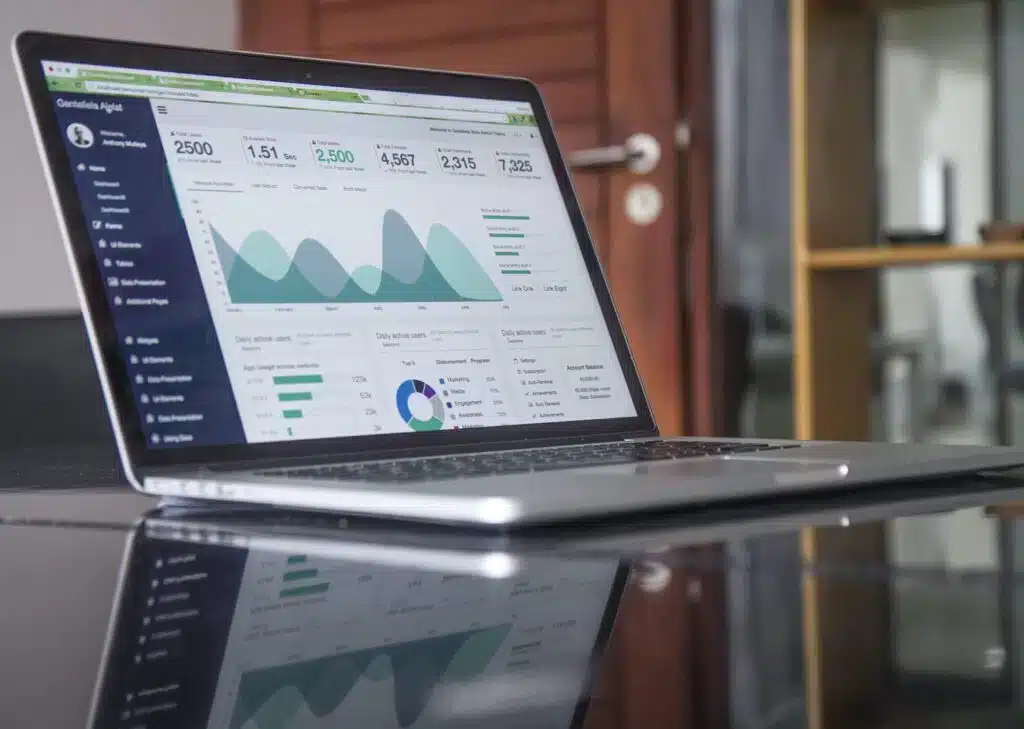Introduction
The ability to understand and leverage data has the potential to drive innovation, make informed decisions, and gain a competitive edge. To navigate this data-rich landscape, it is crucial to have a solid understanding of key data terms and concepts.
In this comprehensive blog, Data Sleek provides you with a comprehensive overview of the 50 most important data terms you should know. Whether you are a data professional, a business owner, or simply someone interested in enhancing your data literacy, this blog will equip you with the knowledge you need to make sense of the data-driven world around you.
I. Data Collection and Storage Terms

1) Data Source
A data source refers to the origin or location from which data is generated or collected. It can include internal sources like databases, CRM systems, and spreadsheets, as well as external sources such as social media platforms, web analytics tools, and IoT sensors.
2) Data Collection
Data collection involves the process of gathering information from various sources. This can be done through methods like surveys, interviews, observations, and automated data capture tools. Additionally, in certain countries like the United States, organizations can also purchase data from third-party providers, which can include demographic data, market research insights, consumer behavior patterns, and more.
3) Data Validation
Data validation is the process of ensuring that the data collected is accurate, reliable, and consistent. It involves checking data for errors, inconsistencies, and adherence, to predefined rules or standards.
There are several methods used in data validation, including range checks, format checks, presence checks, consistency checks, cross-field validation, and data type checks.
4) Data Cleansing
Data cleansing, also known as data scrubbing or data cleaning, is the process of identifying and correcting or removing errors, inaccuracies, or inconsistencies within a dataset.
Data cleansing involves techniques like removing duplicate records, standardizing formats, correcting misspellings, and resolving missing or incomplete data. Improper data cleansing leads to inaccurate insights, damaged reputation, missed opportunities, and compliance risks.
5) Data Integration
Data integration refers to the process of combining data from multiple sources into a unified view. It aims to provide a comprehensive understanding of the data by resolving differences in structure, format, and semantics. For example, integrating customer data from sales, marketing, and customer support systems can provide a 360 degree of customer interactions and behavior.
6) Data Warehouse
A data warehouse is a centralized repository that stores large volumes of structured and organized data from various sources within an organization. It is designed for efficient querying, analysis, and reporting. For example, a healthcare organization may maintain a data warehouse that stores patient records, medical billing data, and clinical research data for analysis and decision-making.
7) Data Lake
A data lake is a storage repository that holds vast amounts of row and unprocessed data, including structured, semi-structured, and unstructured formats. Unlike data warehousing, a data lake allows for storing data without prior transformation, enabling flexible exploration, analysis, and data discovery. For example, a social media platform may use a data lake to store user-generated content, clickstream data, and log files for various analytical purposes.
8) Data Governance
Data governance encompasses the processes, policies, and frameworks that ensure the effective management, quality, security, and privacy of data within an organization. It involves defining roles and responsibilities, establishing data standards, implementing data policies, and ensuring compliance with regulations.
For instance, a financial institution may have data governance practices in place to ensure data accuracy, prevent unauthorized access, and comply with industry regulations.
9) Data Catalog
A data catalog is a centralized repository or tool that provides metadata information about available data assets within an organization. It helps users discover, understand, and access relevant datasets by providing descriptions, tags, data lineage, and search capabilities.
A data catalog enables data analysts to find relevant datasets for their analysis, understand their contents, and determine their suitability for specific use cases.
10) Data Privacy
Data Privacy refers to the protection of sensitive and personally identifiable information (PII) collected from individuals. It involves ensuring that data is collected, processed, and stored in a manner that respects individual’s privacy rights and complies with applicable data.
II. Data Processing and Analysis Terms

11) Data Mining
Data mining refers to the process of discovering patterns, relationships, and insights from large datasets. It involves using various techniques and algorithms to extract valuable information and knowledge. Data mining is done by applying statistical analysis, machine learning algorithms, and data visualization techniques to identify patterns, correlations, and trends within a dataset, enabling organizations to make data-driven decisions to gain valuable insights.
12) Data Modeling
Data modeling is the process of creating a conceptual or logical representation of data structures, relationships, and rules within a dataset. It helps in understanding and organizing data for effective storage, retrieval, and analysis. For example, in a relational database management system, data modeling involves defining tables, columns, and constraints to ensure data integrity and efficient query performance.
13) Data Transformation
Data transformation involves converting and reshaping data from its original format into a desired format suitable for analysis or storage. It includes tasks like data normalization, aggregation, cleaning, and filtering. An example of data transformation is converting row sales data into a summarized monthly sales report for business analysis.
14) Data Aggregation
Data aggregation refers to the process of combining multiple data elements or values into a single unit or summary. It involves grouping and calculating data based on specific criteria or dimensions. For example, in financial analysis, data aggregation can involve summing up sales figures by product category, region, or time period to gain high-level overview.
15) Data Visualization
Data visualization is the representation of data in visual formats like charts, graphs, and maps to facilitate understanding and interpretation. It helps in communicating complex information in a clear and concise manner. An example of data visualization is using a bar chart to visualize sales performance across different product categories.
16) Exploratory Data Analysis
Exploratory Data Analysis (EDA) involves analyzing and summarizing data to uncover patterns, relationships, and anomalies. It helps in understanding the underlying structure of the data and generating hypotheses for further investigation. For instance, EDA can involve generating summary statistics, creating scatter plots, and identifying outliers in a dataset.
17) Predictive Analytics
Predictive Analytics involves using historical data and statistical techniques to make predictions or forecasts about future outcomes or events. It aims to identify patterns and trends in the data that can be used to anticipate future behavior. For example, predictive analytics can be used in healthcare to predict the likelihood of disease occurrence based on patient demographics and medical history.
18) Artificial Intelligence
Artificial Intelligence (AI) refers to the development of computer systems or machines that can perform tasks that can perform tasks that typically require human intelligence. AI encompasses various technologies like machine learning, natural language processing, and computer vision. An example of AI is a virtual assistance that can understand and respond to human language queries.
19) Machine Learning
Machine learning is a subset of artificial intelligence that focuses on developing algorithms and models that enable computers to learn and make predictions or decisions without explicit programming. It involves training models on historical data to identify patterns and make accurate predictions. For instance, machine learning can be used in fraud detection systems to identify suspicious patterns in financial transactions.
20) Natural Language Processing
Natural Language Processing (NLP) involves the interaction between computers and human language. It focuses on enabling machines to understand, interpret, and generate human language in a meaningful way. Examples of NLP applications include text sentiment analysis, chatbots, language translation systems, and ChatGPT.
21) Big Data
Big Data refers to extremely large and complex datasets that cannot easily be merged, processed, or analyzed using traditional data processing techniques. It involves data that is characterized by its volume, velocity, and variety. Big Data technologies and frameworks are used to store, process, and analyze such datasets. For example, social media platforms generate massive amounts of data in real-time, which requires big data solutions to handle and derive insights from this data.
III. Data Quality and Management Terms

22) Data Quality
Data quality refers to the reliability, accuracy, consistency, and completeness of data. It ensures that data is fit for its intended purpose and meets the requirements of users and stakeholders. For example, data quality can be assessed based on criteria such as data accuracy, timeliness, relevance, and consistency.
23) Data Profiling
Data profiling is the process of analyzing and examining data to gain insights into its structure, content, and quality. It involves assessing data patterns, distributions, uniqueness, and relationships to understand its characteristics. Data profiling helps identify anomalies, errors, and inconsistencies within a dataset.
24) Data Governance
Data governance is a set of practices and processes that ensure the effective management, availability, integrity, and security of data within an organization. It involves defining policies, procedures, and guidelines for data management, data access, data usage, and data protection.
25) Master Data Management
Master Data Management (MDM) is a comprehensive approach to managing and integrating critical data entities, such as customers, products, and locations, across an organization. It aims to provide a single, reliable, and consistent view of master data to ensure data accuracy and enhance data quality.
26) Metadata
Metadata is descriptive information about data that provides context, meaning, and attributes of a dataset. It includes details such as data source, data type, data structure, data relationships, and data definitions. Metadata facilitates data discovery, understanding and management.
For example, consider a dataset containing sales transactions in a retail business. The metadata associated with this dataset may include information such as the source of the data (like point-of-sale system), the data type (like numeric or text), the structure of the data (like columns for customer ID, product ID, transaction date, and sale amount), the relationships between different tables (like linking customer information with transaction records), and the definitions or meanings of a specific data elements (like defining the sale amount as the total price of the purchased items).
27) Data Security
Data security involves safeguarding data from unauthorized access, use, disclosure, alteration, or destruction. It includes implementing measures such as encryption, access controls, firewalls, and intrusion detection systems to protect data from security threats and breaches.
28) Data Retention
Data retention refers to the policies and practices of storing and maintaining data for a specific period as required by legal, regulatory, or business requirements. It ensures that data is retained for the necessary duration while complying with relevant retention policies.
29) Data Backup and Recovery
Data backup and recovery involve creating copies of data and storing them in a separate location to protect against data loss or damage. It enables organizations to restore data in case of accidental deletion, hardware failure, natural disasters, or other unforeseen events.
30) Data Archiving
Data archiving is the process of moving infrequently accessed or historical data from primary storage to long-term storage for long-term retention and preservation. It helps optimize storage resources and improve system performance while ensuring data accessibility when needed.
31) Data Masking
Data Masking is a technique for anonymizing or obfuscating sensitive or personal data by replacing real data with fictional or modified data. It helps protect sensitive information during development, testing, or sharing while maintaining data realism and usability.
IV. Data Integration and Interoperability Terms

32) API (Application Programming Interface)
Application Programming Interface (API) is a set of protocols , tools, and definitions that allows different software applications to interact and communicate with each other. It enables developers to access and use the functionalities of a specific software or service by providing a standard way of exchanging data and requests.
For example, social media platforms often provide APIs that allow developers to integrate their applications with the platform’s features, such as posting updates or retrieving user information.
33) ETL (Extract, Transform, Load)
ETL is a process commonly used in data integration. It involves extracting data from various sources, transforming it into a consistent format, and leading it into a target system or data warehouse. For instance, in a retail company, ETL can be used to extract sales data from different databases, transform it by aggregating and standardizing the information, and load it into a centralized data warehouse for further analysis.
34) ELT (Extract, Load, Transform)
ELT is an alternative approach to data integration and processing, closely related to the traditional ETL process. While ETL (Extract, Transform, Load) involves extracting data from various sources, transforming it into a consistent format, and then loading it into a target system, ELT (Extract, Load, Transform) reverses the order of the transformation and loading steps.
In ELT, data is first extracted from the source systems and loaded into a target system without any significant transformations. The data is loaded in its raw form, often into a data lake or data storage system capable of handling large volumes of unstructured or semi-structured data. Once the data is in the target system, the transformation step is performed directly on the data stored within the system itself using tools and technologies that support distributed processing and advanced analytics capabilities.
Distributed computing frameworks like Apache Hadoop or cloud-based data processing services like Amazon Redshift or Google BigQuery enable organizations to process large volume of data at scale, perform complex analytics, and leverage machine learning algorithms directly on the row data.
35) Data Mapping
Data Mapping is the process of defining the relationships and transformations between data elements from different sources or systems. It involves identifying corresponding fields or attributes in different datasets and establishing connections or mappings between them.
For example, in a data integration project, data mapping would involve mapping customer names from one dataset to customer IDs in another dataset to ensure accurate and consistent data integration.
36) Data Interoperability
Data Interoperability refers to the ability of different systems, applications, or datasets to exchange, understand, and use data seamlessly. It involves establishing standards, formats, and protocols that enable data to be shared and interpreted across different platforms or technologies.
For instance, in the healthcare industry, data interoperability allows different electronic health record systems to exchange patient information accurately and efficiently.
37) Data Exchange
Data exchange refers to the process of sharing or transferring data between different systems, entities, or organizations. It involves transmitting data in a structured format using standardized protocols or file formats.
For example, organizations may engage in data exchange when starting customer information with business partners or when collaborating on joint projects that require exchange of data.
38) Data Federation
Data federation is an approach to data integration that allows data to be accessed and queried from multiple sources or systems as if they were a single unified database management system. It involves creating a virtual view of the data that integrates information from valuable sources in real-time. For instance, a business intelligence tool may use data federation to retrieve and combine sales data from multiple regional databases into a single consolidated report.
39) Data Virtualization
Data virtualization is a technology that allows users to access and manipulate data from multiple sources in a unified manner without data replication. It provides a virtual layer that abstracts the underlying data sources and presents a unified view of the data. For example, a data virtualization tool can provide a unified view of customer data from different databases, allowing users to query and analyze the data without the need for data duplication.
V. Data Analytics and Reporting Terms

40) Business Intelligence
Business Intelligence (BI) refers to the processes, technologies, and tools used to analyze raw data and transform it into meaningful insights that drive informed business decisions. BI involves gathering, organizing, analyzing, and visualizing data to uncover patterns, trends, and relationships that can be used to improve operational efficiency, identify opportunities, and mitigate risks.
Popular tools used for business intelligence include Tableau and PowerBI.
41) Key Performance Indicators (KPIs)
Key Performance Indicators (KPIs) are quantifiable metrics that organizations use to measure their performance against specific business objectives or goals. KPIs help monitor progress, track performance, and provide a clear understanding of how well an organization is achieving its strategic targets.
Examples of KPIs can include revenue growth, customer satisfaction scores, conversion rates, or employee productivity.
42) Dashboards
Dashboards are visual representations of data that provide a consolidated view of key metrics and performance indicators in a user-friendly and easily understandable format. Dashboards typically include charts, graphs, and other data visualizations that allow users to quickly assess and monitor the status and trends of various aspects of the business. Dashboards can be customized to display real-time or historical data from multiple sources, providing actionable insights at a glance.
43) Data Insights
Data insights refer to the valuable information and knowledge gained through the analysis and interpretation of data. Data insights provide a deeper understanding of trends, patterns, correlations, and anomalies within the data, enabling organizations to make informed decisions, optimize processes, identify opportunities, and address challenges.
44) Data-Driven Decision Making
Data-driven decision-making is an approach that emphasizes using data and analytics to guide and support the decision-making process. It involves collecting and analyzing relevant data, generating insights, and using them as a basis for making strategic and operational decisions. Data-driven decision-making helps reduce reliance on intuition or guesswork, leading to more objective and evidence-based decision-making.
45) Reporting
Reporting involves the process of presenting data, findings, and insights in a structured and organized manner. Reports provide a summary of relevant information, often in the form of written documents, presentations, or visual displays, to convey key findings, trends, and recommendations to stakeholders. Reports can range from regular operational reports to in-depth analytical reports, tailored to the specific needs and requirements of the intended audience.
VI. Advanced Data Concepts
46) Data Science
Data science is an interdisciplinary field that combines scientific methods, processes, algorithms, and systems to extract knowledge and insights from structured and unstructured data. it involves various techniques such as data mining, machine learning, statistical analysis, and predictive modeling to uncover patterns, make predictions, and solve complex problems. A data scientist uses programming languages like Python or R and tools like Jupyter Notebooks to analyze and interpret data.
47) Data Engineering
Data engineering focuses on the development, construction, and maintenance of data infrastructure and systems that enable the processing, storage, and retrieval of large volumes of data. Data engineers design and implement data pipelines, data warehouses, and data lakes, ensuring efficient and reliable flow of data. They use technologies such as Apache Hadoop, Apache Spark, and SQL for data processing and transformation.
Data scientists and data engineers play complementary roles in the data ecosystem, and their collaboration is crucial for successful data-driven projects.
48) Data Governance Frameworks
Data governance frameworks are a set of policies, processes, and guidelines that define how organizations manage and control their data assets. These frameworks establish rules for data quality, data integrity, data privacy, and data security. Examples of data governance frameworks include the Data Management Body of Knowledge (DMBOK) and frameworks developed by industry standards organizations like DAMA International.
49) Data Ethics
Data ethics refers to the moral principles and guidelines that govern the responsible and ethical use of data. It involves considering the potential impact of data collection, analysis, and usage on individuals, society, and organizations. Data ethics addresses privacy, consent, fairness, transparency, and accountability in data-driven practices. For example, it ensures that personal data is handled securely and respects individuals’ rights and privacy when using data for decision-making.
50) Data Sovereignty
Data Sovereignty refers to the concept that data is subject to the laws, regulations, and jurisdiction of the country or region in which it is located. It encompasses the rights and control that nations have over data within their borders. Data sovereignty has gained importance with the increasing use of cloud computing and data storage, as organizations need to consider legal and regulatory requirements regarding data protection, data residency, and cross-border data transfers.
Conclusion
At Data-Sleek we understand how daunting the data world can seem when you’re first introduced to it. We’re here to help you navigate your options and build customized solutions based on your unique business and needs.







